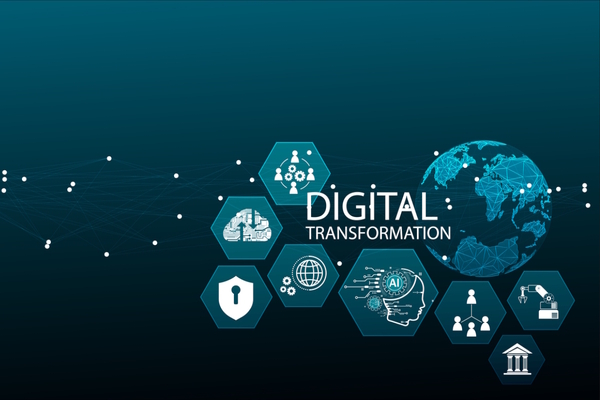Transforming the Public Sector: Insights on AI and Digital Innovation
Sponsored by Dynatrace
Over a sumptuous dinner in London’s House of Lord’s private dining rooms , sixteen executives from a wide range of public sector institutions met to discuss the challenges of transforming the public sector through IT innovation.
The conversation played out over the course of two hours; the following is a summary of the topics, comments, thoughts, opinions and success stories presented by the participants during the delicious three course meal.
As one would expect, Chatham House rules applied so none of the individuals or organisations they represent are named, resulting in a frank and honest exchanging of ideas, and most importantly, opinions.
In today’s fast-paced digital landscape, the public sector is undergoing significant transformations, particularly through the integration of IT innovations. This shift is not merely about adopting new technologies; it is about fundamentally changing how public services operate, engage with citizens, and adapt to challenges. As public sector professionals, understanding the nuances of this transformation is essential for creating impactful, citizen-focused services.
The Driving Forces Behind Digital Transformation
Digital transformation within the public sector is largely driven by the need for increased efficiency and improved service delivery. In recent years, the COVID-19 pandemic has accelerated this change, compelling organisations to innovate rapidly.
Public sector entities are often under pressure to meet the growing expectations of citizens who demand better access to services, transparency, and responsiveness. As the need for efficient, real-time information becomes paramount, organisations must consider how to effectively implement technology to streamline operations and enhance user experiences.
Key Insights into Digital Transformation
- Efficiency Gains: The introduction of digital tools allows public sector organisations to optimise their processes, reducing the time and resources required for service delivery. For example, virtual meetings became a standard practice during the pandemic, demonstrating that efficiency can be achieved without compromising the quality of service.
- Data-Driven Decisions: Enhanced data collection and analysis capabilities allow public organisations to make informed decisions that reflect the needs of the community. By leveraging data analytics, they can identify trends and adapt their services accordingly.
- Citizen Engagement: Technology facilitates better communication between government entities and citizens. Public sector organisations are increasingly using digital platforms to engage with the public, ensuring that feedback and insights are incorporated into service design.
- Collaboration and Sharing Best Practices: The sharing of information and collaboration among various public sector entities is crucial for fostering a culture of innovation. By working together, organisations can pool resources and knowledge, leading to more effective solutions.
- AI and Automation: The implementation of artificial intelligence (AI) and automation in public services is revolutionising how tasks are performed. AI can handle routine inquiries, freeing up staff to focus on more complex issues that require human insight.
Examples of Successful Transformation
Public sector organisations have successfully embraced digital transformation, with several notable examples highlighting the potential benefits:
- Public Healthcare: In response to the need for better data management, NHS England is implementing a robust data architecture to improve transparency and accountability. This initiative aims to standardise data quality across various services, ultimately enhancing patient care.
- University Collaborations: Two Higher Education institutions are leveraging technology to improve student experiences and streamline administrative processes. For instance, self-service solutions have been implemented, allowing students to access information and services more efficiently.
- Central Digital Platforms: Recent initiatives in central government have aimed at transforming procurement processes through the creation of digital platforms that facilitate seamless interactions between suppliers and contracting authorities. This innovation enhances efficiency and reduces administrative burdens.
The Role of Leadership in Digital Transformation
Leadership plays a pivotal role in the successful implementation of digital initiatives within the public sector. Leaders must champion innovation and foster a culture that embraces change. This includes not only investing in new technologies but also prioritising the upskilling of staff to ensure they can effectively utilise these tools.
Effective leadership also requires a commitment to transparency and accountability. By engaging stakeholders and encouraging open discussions, leaders can build trust and foster a collaborative environment conducive to innovation.
Overcoming Barriers to Innovation
“If you can’t observe it, you can’t innovate it. And if you’re innovating, you want to be able to understand what it’s actually doing to the end-to-end service.”
Evrim Tekeşin, Regional Director for UKI Public Sector, Dynatrace
Despite the clear benefits of digital transformation, public sector organisations often face barriers that hinder progress. Common challenges include:
- Resistance to Change: Employees may be hesitant to adopt new technologies, fearing job loss or increased workload. Addressing these concerns through education and training can help ease the transition.
- Resource Constraints: Limited budgets and resources can impede the implementation of new technologies. Prioritising initiatives that deliver the greatest impact can help overcome these limitations.
- Complex Regulatory Environments: The public sector is often subject to stringent regulations, making it difficult to innovate quickly. Streamlining processes and fostering a culture of flexibility can help navigate these complexities.
Embracing AI for Future Growth
As AI technology continues to evolve, its integration into public services will become increasingly vital. AI has the potential to enhance decision-making processes, improve operational efficiency, and deliver better outcomes for citizens.
However, it is essential to approach AI implementation with caution. Establishing clear governance frameworks and ethical guidelines will be crucial to ensuring that AI is used responsibly and effectively. Public sector organisations must also invest in training staff to leverage AI tools, fostering a workforce that can adapt to new technologies.
The Future of Public Sector Innovation
The future of public sector innovation lies in a collaborative approach that embraces technology while prioritising citizen needs. By fostering an environment of openness and adaptability, public sector organisations can drive meaningful change that enhances service delivery and improves the overall quality of life for citizens.
“We work very closely with public sector organisations, and we feel like there’s a purpose of excellence everywhere. We are passionate about sharing and creating a community.”
Evrim Tekesin, Dynatrace
In conclusion, the ongoing transformation of the public sector through IT innovation represents a significant opportunity to enhance service delivery and citizen engagement. By embracing technology, fostering collaboration, and prioritising leadership, public sector organisations can create a brighter, more efficient future.
To learn more, please visit: www.dynatrace.com

Business Reporter Team
Most Viewed
Winston House, 3rd Floor, Units 306-309, 2-4 Dollis Park, London, N3 1HF
23-29 Hendon Lane, London, N3 1RT
020 8349 4363
© 2025, Lyonsdown Limited. Business Reporter® is a registered trademark of Lyonsdown Ltd. VAT registration number: 830519543





